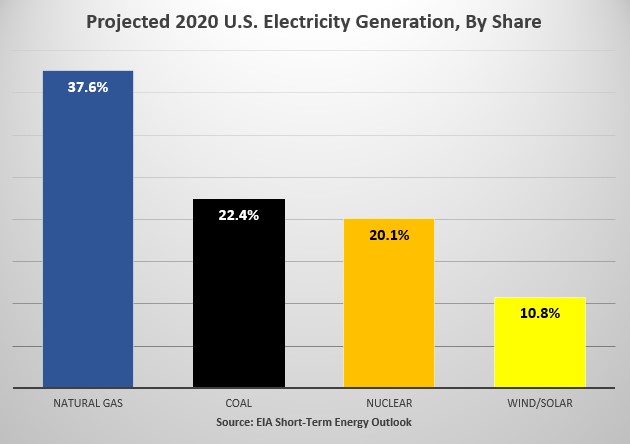Natural Gas, LNG Exports and Emissions Progress
Mark Green
Posted September 27, 2019
A pair of new, positive developments on the emissions/climate front:
- The U.S. Energy Information Administration (EIA) projects that energy-related carbon dioxide emissions will decline 2.5% this year.
- A new Energy Department report on the life cycle greenhouse gas emissions associated with U.S. liquefied natural gas (LNG) exports confirms the environmental benefits of natural gas vs. coal – significant given expanding markets in Asia and Europe for U.S. LNG.
Both are very important. EIA’s CO2 projection, along with the projected 4.9% increase in natural gas consumed for power generation relative to 2018, underscores the point that increased use of natural gas in fueling power generation lowers CO2 emissions, and that the recent trend of the U.S. recording the lowest CO2 levels in a generation will continue.
At the same time, a National Energy Technology Laboratory (NETL) report – showing that for 100-year global warming potential (GWP) scenarios, generating power with natural gas has lower life cycle GHG emissions than coal generation – can be huge for global climate progress, wherever natural gas may be used to generate electricity.
EIA’s Short-Term Energy Outlook projects that the share of U.S. total utility-scale electricity generation from natural gas-fueled power plans will rise to 37% in 2019 and nearly 38% in 2020. In 2018, natural gas’ share was 34%.

EIA:
[The agency] expects U.S. CO2 emissions in 2019 to decline because the forecast share of electricity generated from natural gas and renewables is increasing while the forecast share generated from coal, which is a more carbon-intensive energy source, is decreasing.
The NETL report compared exported U.S. LNG with regional coal or gas or other LNG sources for electric power generation in European and Asian markets from a life cycle GHG perspective – that is, from production, liquefaction and transport through end-use. According to NETL, on a 100-year GWP basis, pipeline natural gas power is 20 to 53 percent lower emitting than coal for Europe and 14 to 49 percent lower than coal for Asia. Liquefied natural gas power is 23 to 56 percent lower than coal for Europe and 21 to 54 percent lower than coal for Asia.

It’s a big report that API is still analyzing, but the first sentence in the summary section stands out:
This analysis has determined that the use of U.S. LNG exports for power production in European and Asian markets will not increase GHG emissions from a life cycle perspective, when compared to regional coal extraction and consumption for power production.
Natural gas has proved its environmental benefits in the U.S., and it certainly looks like those benefits are exportable through LNG. Frank Macchiarola, API vice president for downstream:
“U.S. LNG exports are providing environmental and national security benefits globally and also creating jobs here at home. DOE’s new study confirms those benefits. We look forward to more thoroughly reviewing the study and submitting formal comments.”
About The Author
Mark Green joined API after a career in newspaper journalism, including 16 years as national editorial writer for The Oklahoman in the paper’s Washington bureau. Previously, Mark was a reporter, copy editor and sports editor at an assortment of newspapers. He earned his journalism degree from the University of Oklahoma and master’s in journalism and public affairs from American University. He and his wife Pamela have two grown children and six grandchildren.


